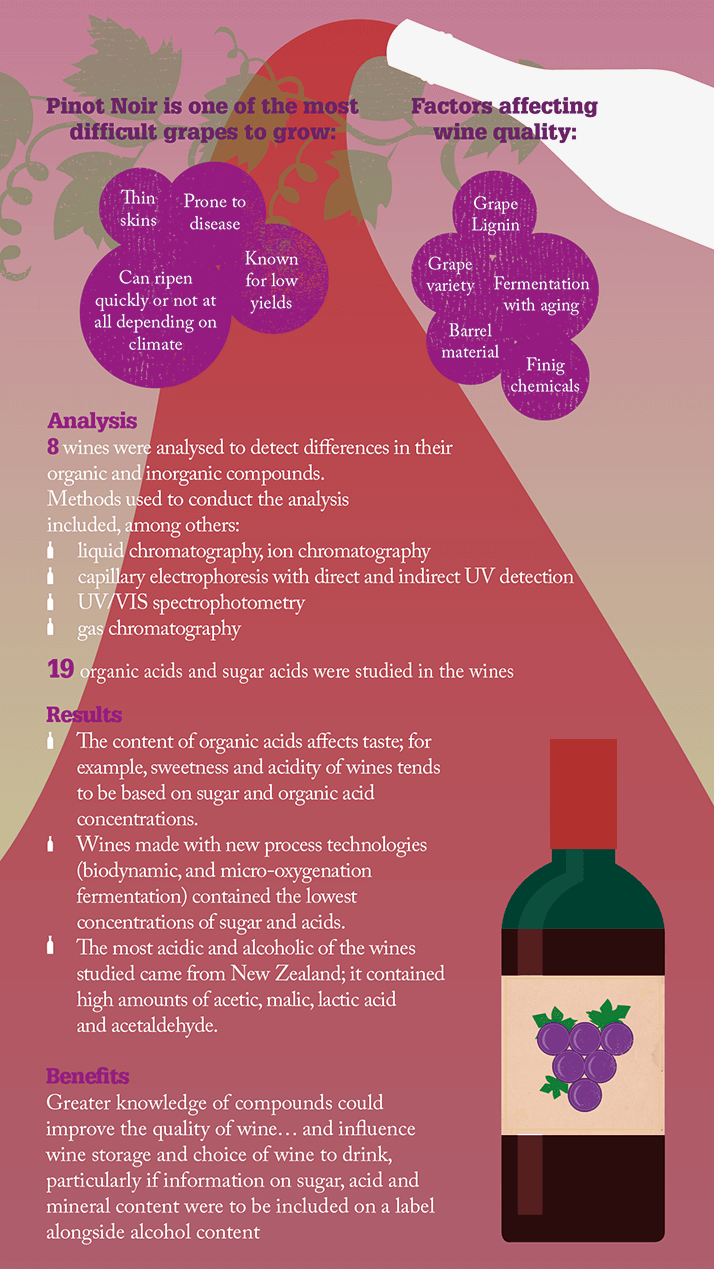Pinot noir wines all start off with Pinot noir grapes, and yet there is great variation in color and taste. To find out why, a team of analytical scientists from the University of Helsinki embarked upon research (that was in no way enjoyable) to analyze the chemical profiles of eight Pinot noir wines from across the world. They were able to determine some of the finer processing points, such as which sugars had been added and whether sulfur dioxide was added to prevent the wine from oxidizing.
Heli Sirén, a researcher from the university’s department of chemistry, believes that if more information was included on the label, such as sugar content and organic acid content, it might also provide a clue as to how the wine would taste. For instance, the team found that biodynamically produced grapes fermented without sulfur dioxide and micro-oxygenation treated grapes gave the lowest organics contents – and it is the content of organic acids that can give wine a characteristic taste. “I’m very interested in winemaking processes and in this study I wanted to look at what’s happening at a molecular level,” says Sirén. “It is commonly known that the flavors and colors of wine are influenced by aging and sunlight, but we also wanted to look at winemaking processes and whether producers use artificial improvements.”

References
- H. Sirén, K. Sirén and J. Sirén, “Evaluation of Organic and Inorganic Compounds Levels of Red Wines Processed from Pinot Noir Grapes,” Anal. Chem. Research, 3, 26-36 (2015).




